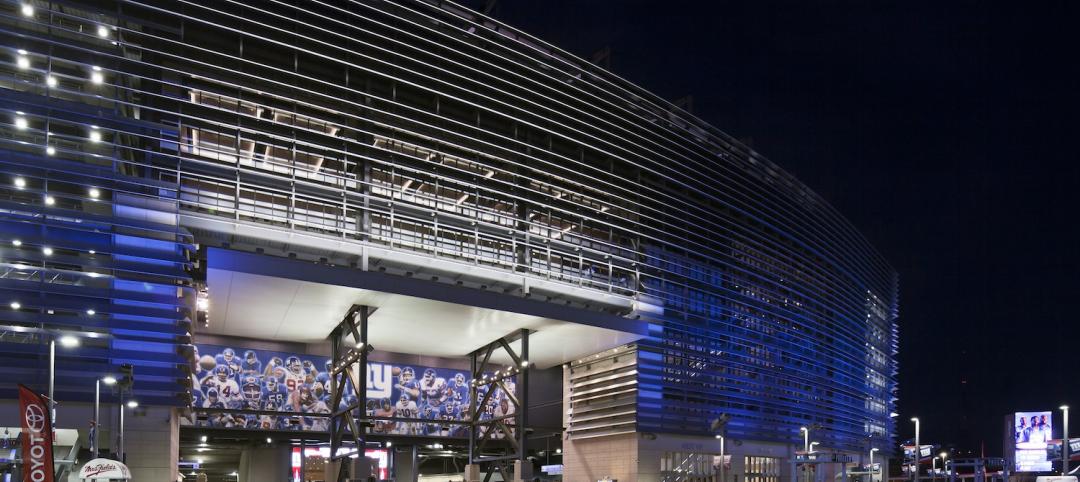This year's unusually difficult winter took its toll on construction activity. Nonetheless, first quarter spending for all the major groups was up compared to the same period in 2013.
The U.S. Census Bureau reported that total construction spending advanced 0.2% in March to $942.5 billion at a seasonally adjusted annual rate (SAAR). First quarter not seasonally adjusted (NSA) spending was 8.3% higher than the same period a year ago.
Nonresidential building construction spending fell for the fifth month in a row, down 1.0% to $298.8 billion (SAAR) in March. January and February spending were revised down by $3.3 billion and $6.4 billion, respectively, which was 1.1% and 2.1% of their respective previously reported numbers. That altered the monthly percentage change for January from +0.1% to ?0.9%. Despite the recent declines, first quarter NSA spending was 3.5% higher than in 2013.
Heavy engineering (non-building) construction spending increased 0.8% to $269.2 billion (SAAR) in March. January and February spending were revised down by $2.5 billion and $5.3 billion, respectively, which was 0.9% and 2.0% of their respective previously reported numbers. First quarter NSA spending was 4.5% higher than a year ago.
Total residential construction spending, which includes improvements, rose 0.7% in to $374.5 billion (SAAR) after inching up 0.1% in February. New residential construction spending, which excludes improvements, also increased 0.7% to $229.1 billion in March, its 30th consecutive monthly increase. First quarter NSA total residential construction spending was 16.0% higher than last year and new residential construction was 17.9% higher.
March private construction spending bounced back from February's 0.2% dip at a seasonally adjusted (SA) rate, increasing 0.5%. First quarter NSA spending was 12.5% higher than 2013 first quarter spending.
Meanwhile, public construction spending fell for the fifth consecutive month, down 0.6% in March. First quarter NSA public spending was 2.0% lower than a year ago.
The Economy
The economic data continue to indicate that the country is recovering from the harsh winter. At this point, the construction spending data are only available through March. We know that the bad weather across much of the nation extended into April and May. Thus we do not look for a quick rebound in the numbers, but continued slow improvement.
We do believe that economic activity is shaking off the winter blues and will continue to post better numbers. Employment growth is key, both as an indicator of how fast the economy is expanding and as a stimulus to further growth as newly hired workers spend their new income.
The Federal Reserve continues to ratchet down its monthly purchases of long-term assets. At the end of April, the Fed announced it would reduce its purchases of long-term assets from $55 billion per month to $45 billion per month starting in May. Prior to January, when the reduction in purchases began, the Fed was buying $85 billion of long-term assets per month. To date, the Fed's actions have led to only a relatively small increase in long-term interest rates.
Risks to the economy and construction remain. These include:
- A sustained spike in interest rates due to the Federal Reserve unwinding its asset purchase program too rapidly
- Sharp reduction in government spending in the short run
- Sovereign debt default by one or more European governments
- One or more European governments abandon the euro
- A sudden, significant increase in oil prices for a prolonged period
The probability of any one of these occurring is fairly low. Nonetheless they remain a potential negative for the economy and construction.
Two other issues will become important issues in the coming months. First, September 30 marks the end of the current federal fiscal year. At that point, appropriations for most government operations and programs expire. The appropriate action would be to have the necessary appropriation bills for the next fiscal year passed and signed into law prior to October 1. This is not a given. Appropriations for the current fiscal year did not become law until the middle of January 2014.
Second, the suspension of the debt ceiling expires in March. Prior to that, a new debt ceiling needs to be passed, the debt ceiling suspension needs to be extended, or—best of all worlds, but extremely unlikely—the debt ceiling needs to be eliminated.
Failure to deal with these issues in a timely manner will create additional uncertainty for business and the economy with negative fallout for investment and construction.
The Forecast
The Reed forecast assumes that, despite these risks, the economy grows at a moderate pace this year and next. Further, nonresidential building construction, which has been struggling of late, is forecast to gain traction and improve this year and next.
Heavy engineering (non-building) construction activity, which has shown some strength of late, is forecast to expand this year and next. Federal funding for infrastructure projects is expected to increase this year and beyond, although not by nearly the amount that is necessary to properly address the nation's aging infrastructure. The amount of funding available for public projects will greatly affect the level of infrastructure construction activity. Public-private partnerships at the state and local level will boost the amount of money available for infrastructure projects.
Total construction spending is forecast to increase 9.0% in 2014 and 11.3% in 2015, with nonresidential and heavy engineering construction gaining strength and residential construction continuing its expand.
For more from this report, including charts, click here.
Related Stories
| Aug 21, 2014
Ranked: Top convention center AEC firms [2014 Giants 300 Report]
Gensler, AECOM, and Hunt Construction top BD+C's rankings of the nation's largest convention center design and construction firms.
| Aug 21, 2014
Apartment construction hits 25-year high
The boost to apartment construction suggests that job gains are encouraging the creation of households.
| Aug 21, 2014
Strategies for providing great customer service
Customers are inherently inefficient and inconvenient to do business with, writes Customer Service Consultant Micah Solomon, in a recent Forbes post. That’s why he believes great customer service depends on understanding this. SPONSORED CONTENT
Sponsored | | Aug 21, 2014
Defining the measure of success when implementing new technologies
Sasha Reed and Chad Dorgan, McCarthy Building Cos.’s Vice President of Quality and Sustainability, discuss the keys to managing innovation within a large construction firm. SPONSORED CONTENT
| Aug 21, 2014
RTKL's parent company Arcadis acquires Callison
The acquisition of Callison, known predominantly for its leadership in retail and mixed-use design, builds on Arcadis’ strong global design and architecture position, currently provided by RTKL.
| Aug 21, 2014
Must See: Detroit's Beaux-Arts parking garage
An opulent Renaissance Revival building in downtown Detroit is being used as a parking garage.
| Aug 20, 2014
WELL Building: The next step in green sports construction
The WELL Building Standard, a new protocol that focuses on human wellness within the built environment, is a particularly good fit for sports facilities, write Skanska's Tom Tingle and Beth Heider.
| Aug 20, 2014
Seattle's King Street Station thoughtfully restored [2014 Reconstruction Awards]
After years of neglect and botched renovations, King Street Station sparkles once again.
| Aug 20, 2014
Tour an office with no assigned workstations [slideshow]
The New York office of the Gerson Lehrman Group recently redesigned its office without personal desks or cubicles. The company gave each of its 250 employees a locker, a laptop, and told to work anywhere they wanted, according to Business Insider.
| Aug 20, 2014
Architecture Billings Index reaches highest mark since 2007
The American Institute of Architects reported the July ABI score was 55.8, up noticeably from a mark of 53.5 in June.
















